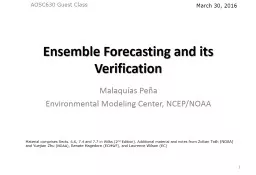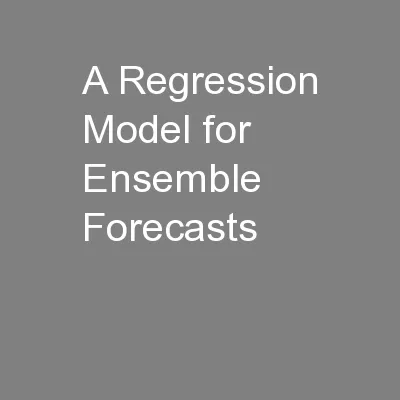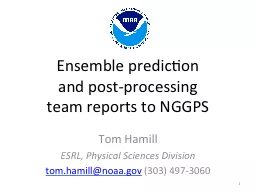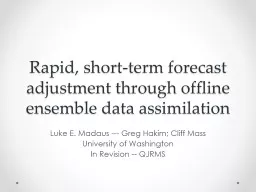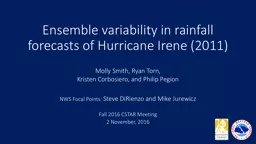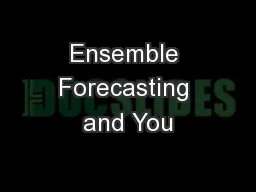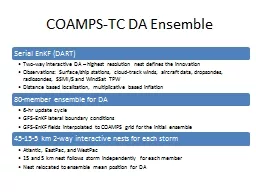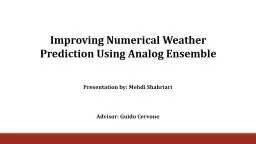PPT-Ensemble Forecasting and
Author : tatiana-dople | Published Date : 2019-03-19
its Verification Malaquías Peña Environmental Modeling Center NCEPNOAA 1 Material comprises Sects 66 74 and 77 in Wilks 2 nd Edition Additional material and
Presentation Embed Code
Download Presentation
Download Presentation The PPT/PDF document "Ensemble Forecasting and" is the property of its rightful owner. Permission is granted to download and print the materials on this website for personal, non-commercial use only, and to display it on your personal computer provided you do not modify the materials and that you retain all copyright notices contained in the materials. By downloading content from our website, you accept the terms of this agreement.
Ensemble Forecasting and: Transcript
Download Rules Of Document
"Ensemble Forecasting and"The content belongs to its owner. You may download and print it for personal use, without modification, and keep all copyright notices. By downloading, you agree to these terms.
Related Documents

